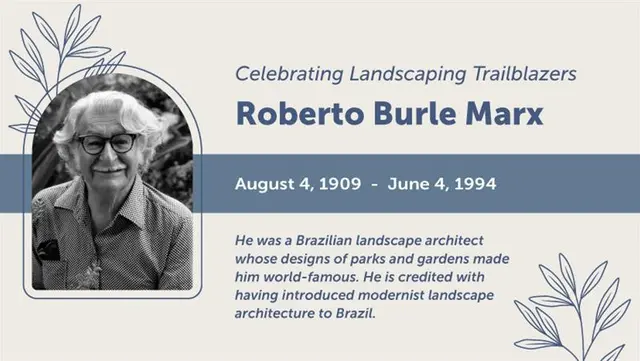
Celebrating Landscaping Trailblazers: Frederick Law Olmsted
America's Master Landscape Architect

Few individuals have shaped the American landscape as profoundly as Frederick Law Olmsted. Widely celebrated as the father of landscape architecture, Olmsted revolutionized the way outdoor spaces were designed, transforming them into vital public resources for health, community, and connection. His vision of parks as democratic spaces for all people set a lasting standard that continues to influence urban planning and landscape design to this day.
Born in Hartford, Conn., in 1822, Olmsted cultivated an early love of nature during countryside trips. Although an illness at a young age briefly impaired his eyesight and limited his formal education, he remained intellectually curious, later attending science and engineering lectures at Yale University. In 1850, a life-changing, six-month walking tour through Europe set him on course to leave his mark across North America.
After a visit to Liverpool’s Birkenhead Park, one of the first public parks open to all citizens, Olmsted was struck by the idea that such spaces could offer dignity and recreation to every member of society. He returned home determined to bring that philosophy to America.
His entry into landscape architecture formally began when he partnered with British architect Calvert Vaux to design New York City’s Central Park. Their winning plan, besting 32 other competitors, featured sunken transverse roads to preserve the park’s natural feel and took 15 years to complete and involved the planting of more than half a million trees, shrubs, and vines.
The success of Central Park launched Olmsted into national prominence. Over the decades that followed, he designed and influenced many of the most iconic outdoor spaces in the country, including Boston’s Emerald Necklace, Philadelphia’s Fairmount Park, Detroit’s Belle Isle Park, Chicago's Jackson Park, and the grounds of the U.S. Capitol. His projects were characterized by a deep understanding of topography, ecology, and human experience, creating spaces that fostered peace and well-being in increasingly industrialized cities.
Olmsted’s contributions extended beyond traditional parks. He led efforts to conserve Yosemite, producing one of the foundation documents advocating for permanent public preservation of natural landscapes—work that would ultimately inspire the creation of the National Park Service. His later projects, such as the ambitious landscaping of George Vanderbilt’s Biltmore Estate, demonstrated his ability to rehabilitate damaged land and create breathtaking natural vistas.
Throughout his career, Olmsted was a pioneer not only in design, but also in professional practice. He was the first to use the title “landscape architect” and established the world’s first professional office dedicated solely to landscape design. His influence carried on through his sons and their firm, which remained active for more than a century, shaping thousands of landscapes across North America. Olmsted passed away on Aug. 28, 1903, at the age of 81. His vision lives on not only in the parks and public spaces he designed, but in the values that continue to shape landscapes.
Today, Olmsted’s belief in the healing power of green spaces resonates more than ever. At BrightView, we continue to embrace his ideals by designing and maintaining landscapes that invite connection, inspire communities, and promote well-being. Through every park, campus, and outdoor environment we create and maintain, we proudly build on Olmsted’s enduring legacy, making sure nature remains accessible, welcoming, and transformative for all.
This article was researched from the Olmsted Network, the Biltmore, Britannica, and the National Park Service.



